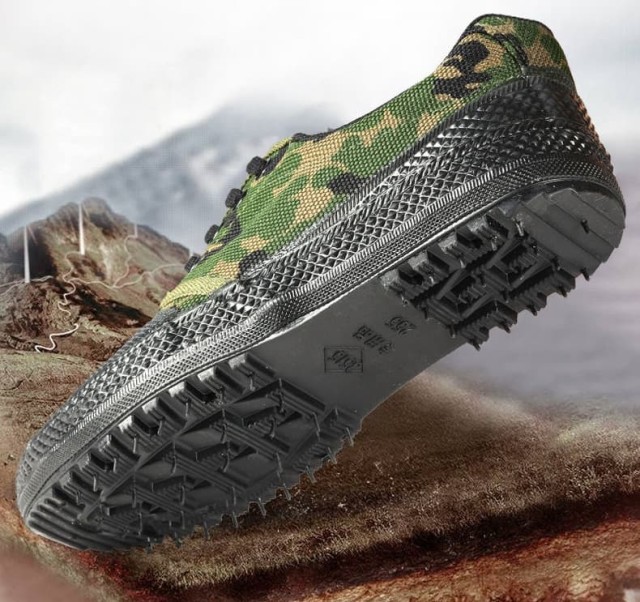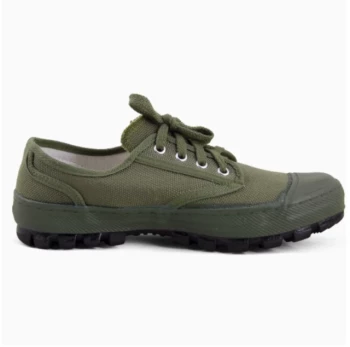For workers facing harsh conditions, boot durability isn't just about longevity—it's about safety. Vulcanized rubber dominates industrial footwear for good reason, but niche scenarios demand alternatives like PVC or neoprene. Here's how to match material science to your job hazards.
The Science of Material Durability in Work Boots
How Vulcanization Transforms Rubber’s Performance
Vulcanization chemically stabilizes natural rubber by cross-linking polymer chains, turning a soft material into one that resists tearing, abrasion, and temperature extremes. Research shows this process:
- Eliminates weak spots that cause premature failures in non-vulcanized materials
- Boosts heat resistance up to 300°F in continuous exposure (critical for foundries or asphalt work)
- Maintains flexibility in sub-zero conditions where PVC becomes brittle
Key Metrics: Abrasion Resistance, Tear Strength, and Lifespan
ASTM-certified testing reveals why vulcanized rubber leads:
-
Abrasion Resistance
- Withstands 5x more friction cycles than untreated rubber before showing wear
- Outperforms PVC in gritty environments like construction sites
-
Tear Strength
- Cross-linked structure prevents crack propagation from sharp impacts
- Essential for loggers or metalworkers facing puncture risks
-
Lifespan
- Lasts 12–18 months in daily heavy industrial use vs. 6–9 months for standard rubber
- Retains protective properties even as surface scuffs accumulate
Real-World Applications and Limitations
Vulcanized Rubber in Extreme Environments: Mining Case Study
A 2022 study of Australian iron ore miners found:
- 92% fewer boot replacements when switching from PVC to vulcanized rubber
- 67% reduction in foot injuries due to maintained sole integrity in rocky terrain
PVC/Neoprene: Niche Uses Where Flexibility Outweighs Durability
These materials shine in specific scenarios:
PVC Advantages
- Superior chemical resistance against oils and mild acids (ideal for food processing)
- Lighter weight for jobs requiring frequent kneeling (e.g., electrical work)
Neoprene Strengths
- Best-in-class insulation for freezer warehouses (-40°F performance)
- Conforms to foot contours for healthcare workers standing 10+ hours daily
Making Informed Choices
Matching Material Properties to Job Hazards
| Hazard | Best Material | Why? |
|---|---|---|
| High abrasion | Vulcanized rubber | Cross-linking resists surface degradation |
| Chemical splashes | PVC | Non-porous surface blocks absorption |
| Sub-zero temps | Neoprene | Traps body heat effectively |
Maintenance Practices to Extend Boot Longevity
Even premium materials fail prematurely without proper care:
- Daily: Brush off abrasive particles to prevent embedded grit
- Weekly: Apply silicone-based conditioner to vulcanized rubber
- Monthly: Inspect for micro-tears near flex points (toes, ankles)
Upgrade Your Safety Footwear Strategy
3515’s engineered vulcanized rubber boots give distributors and bulk buyers a competitive edge—combining ASTM-certified protection with cost-saving durability. Let’s collaborate on footwear solutions that reduce workplace injuries and replacement costs. [Contact 3515’s industrial team] to discuss your project.
Products You Might Be Looking For:
View rugged vulcanized rubber work boots
Explore high-top vulcanized safety shoes
Check out durable low-cut industrial footwear
Related Products
- Durable Rubber Sole Outdoor Shoes Wholesale & Custom Manufacturing
- Durable Rubber-Soled Utility Shoes for Wholesale & Custom Brand Manufacturing
- Durable Canvas Work Shoes with Rubber Lug Sole | Wholesale Manufacturer
- Wholesale Durable Camo Canvas Shoes with High-Traction Rubber Soles
- Factory-Direct Wholesale Canvas Boots with High-Traction Rubber Soles
Related Articles
- How Vulcanized Shoe Construction Delivers Unmatched Durability and Flexibility
- Why Vulcanized Shoes Dominate Durability and Comfort: A Technical and Practical Guide
- Why Vulcanized Soles Dominate Technical Skateboarding: A Science and Performance Breakdown
- How Vulcanized Rubber Powers High-Performance Applications Across Industries
- Vulcanized Shoes Decoded: When They Shine and When to Choose Alternatives




















